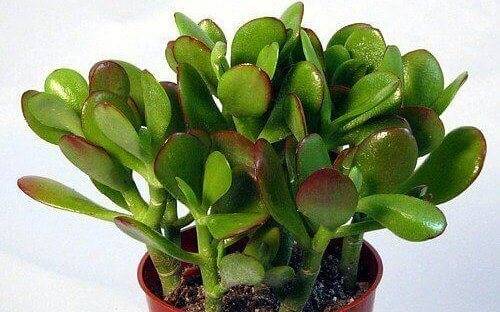Crassula plants: Species, growth, care, propagation, pruning, and benefits!
What are Crassula plants?
Crassula Plants indicate a genus that has mostly succulents. ‘Succulents’ are plants whose leaves are extra thickened and swell because of extra water retained inside, they are very easy to grow. The genus has a long list of species and is native to South Africa. Most popular are the jade succulent plants. There are a lot of varieties seen in crassulas from shapes, sizes, patterns, and colors. The plants are available as shrubs, groundcovers, and trailing forms too. They look beautiful in minimal styling. Flowering in these plants is seen during the early springs or as the winter ends. They are highly drought resistant.
Key takeaways:
- The name crassula has a Latin origin from the adjective ‘Crassus’ which means thick” and was first described with ten species in 1753 by Carl Linnaeus, who is known as the father of taxonomy.
- The different species of crassula are Crassula ovata, Crassula arborescens, Crassula perforata, etc.
- They are Easy to grow, and low maintenance is required.
Species of crassula
To include all the species of crassula this whole article won’t be enough. There are a lot many.

But the most known ones are:
Crassula ovata
Jade trees, the other name for crassula ovata, as I said earlier is the most popular of all crassulas. They look like tiny trees with thick stems and oval fleshy leaves. Crassula ovata is also known as money plants or money trees
Crassula perforata
They are known for their triangular-shaped leaves that look like hugging the stem and attached to it.
Crassula arborescens
This shrub has beautiful round-shaped greyish-blue leaves with shades of maroon on the edges. Height is about 3-4 feet. This plant is also known as the silver dollar plant or silver jade plant and now you know why.
Some more species are Crasulla bravifolia, c. tetragona, crassula pubecens, crassula pellucida, c. perfoliata, c. metacav, etc.
Benefits of crassula plants
- Make the corner of your super attractive wherever they are placed. They are best if you like minimal designs
- They are known to bring positivity and luck in life especially jade plants(money trees). Crassula plants are also good for mental health.
- Crassula plants also have medicinal properties like curing skin warts, healing wounds, improving digestion, etc. juice from its leaves is extracted and used
- Crassulas are the perfect gifting options. It’s getting too famous day by day.
- Easy to grow, and low maintenance required
- As per research by NASA, crassulas are also good air purifiers.
How do you grow and care for crassula plants?
Crassula plants need full sun in most cases. While others need partial shade when the sun is direct having strong rays. For growing crassula soil need to be mixed with sand so that it gets well-drained. It is vital to notice that soil is not overly wet and is aerated enough to prevent root rot.
For the healthy growth of crassula plants, watering should be done irregularly when required. Look for dry soil when about to water.
Cold temperatures can hinder the growth of crassula plants. Avoid the activities that can freeze the plants and try to keep the plant trying in winter. Crassula plants can bear low to high humidity. Use fertilizer with a low level of nitrogen, and don’t overdo fertilizing the soil.
In a few cases, crassulas are seen to be attacked by spider mites, and mealybugs if the leaves are kept too dry.

How to prune crassula plants?
Go for pruning the crassula plants when they overgrow or have lost the desired shape. After they bloom, it is the perfect time to prune them. Other than this, if you have some old dull stems you can cut them down too.
How to Grow Crassula From Seed:
The Perfect time for growing crassula from the seed is in Spring or summer as it will take a maximum of 5 days to 3 weeks to germinate when grown by seeding them. Here are some ways you need to follow to grow crassula from seed.
- First of all, for seeding the crassula, you need to have a 4-inch spot having a good amount of drainage hole. After that, you need to show 1 2 3 seeds in the pot by keeping at least one inch of distance.
- Make sure not to cover the seed. You need to water the soil to keep it moist. After that, cover it with a plastic bag.
- The right place to keep the pot is in a full sun location and maintain the soil moisture and the temperature of about 70 degrees Fahrenheit. You need to remove the bag for 1 hour every day.
- In case in a pot there grows more than one plant then you need to pull out or replant the vehicle plant into another pot. When the Seedling grows three leaves then it is the right time to remove the plant from the pot and move it to the larger pot.
- In the larger pot, you need to make sure there is a hole in the center similar to the starting pot and you need to find a location where it received full son and fill the pot with well-draining soil around the roots of the plant.
Common Problems With Crassula:
Here are some common problems you may find while growing the crossula in your home garden.
Leaf drop:
If you underwater the plant they will get stressed out if you don’t water them on time and start dropping the leaves when they become extremely dry. The signs you can see if the plant is underwater are soft or shriveling leaves and stem leaves turning Brown and drying out wrinkling of leaves and turning red or purple.
Yellowing Leaves, Drooping Stems:
In case of over-watering the plant, you may see the sign of the leaves turning yellow and dropping of stems. In case if you find the main trunk soft or mushy then it is a sign of root rot which is caused when you overwater the plant. In this situation, you need to dry out the plant completely and only water if you find the plant is completely dry.
Leaves Turning Red:
The leaves will turn to red color when they are exposed to a lot of Sunlight so you need to move the plant to a less light location so that they turn back to the green color. The redness of the leaf will not harm the plant if you like the plant as it is; you can keep the plant there only.
How to propagate crassula plants?
For more such plant related-articles, you may also read, What is a Propeller Plant? – How to Grow Crassula falcata ‘Propeller Plant’?
Propoage crassula in water
Crassula plants can be propagated in water. Like many succulents, the crassula plant’s parts tend to form new plants. Leaves can be placed in water after which roots are seen emerging that can be planted.
Propagate crassula from the stem and root cuttings
To start propagating your crassula, all you need is stem cuttings. Allow a callus to form on the cut edge of the stem before plunging it into the soil. Place your stem cutting in a porous clay or terracotta pot with drainage holes to reduce the risk of overwatering. Fill your clay pot with damp soil and insert the stem cutting once the callus has formed. Make sure the potting mix should always damp to the touch until new plants are established.
A final note of the context
Crassula plants have a wide variety and the common cultivars as we have named them above. You have now known that they are cure-looking succulents and are great indoor plants that are super easy to keep and have many benefits. We hope you have liked our effort to bring the best information to you.
FAQ:
Is crassula an indoor plant?
Crassula is an indoor plant. Their leaves are puffy having a hold of a lot of water, so they don’t need extra care. They are more resistant to drought. They are one of the best houseplants or ornamental plants.
Can I put the jade plant in the bedroom?
According to ancient Chinese beliefs, the jade plants should not be placed in bedrooms, also not in bathrooms due to flushing water, which is believed to rinse off the positive energies from the money trees.
Is crassula toxic to humans?
Yes, few species of crassula are toxic like the jade plants. They are toxic to humans, and pets and cause digestive infection, and mental illness if ingested. So try to keep them away from kids, and pets.
How long do jade plats live?
If the care and maintenance are proper even if they demand less, the jade pants as well as many crassula plants can love for years.
Do jade plants have flowers?
In very favorable conditions, jade plants may be seen to bloom as it gets mature. But as houseplants, blooming is rarely seen.


